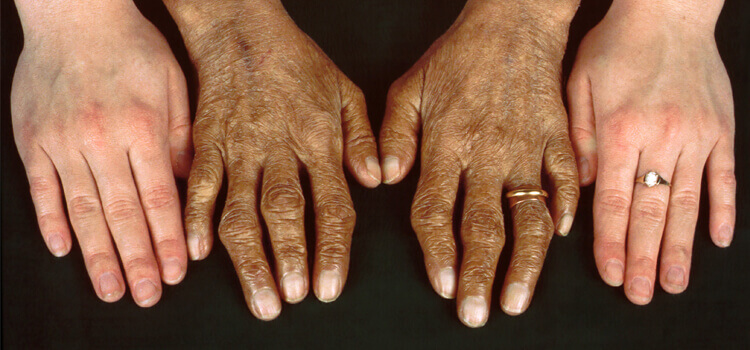
HEMOCHROMATOSIS
Hemochromatosis is a medical condition in which the patient’s body absorbs too much iron from the foods leading to iron overload in the body. The excess iron gets stored in the liver, pancreas, bones and even in the heart leading to life threatening conditions
There are two types of Hemochromatosis:
Primary Hemochromatosis is an inherited medical disorder. In men who have a genetic predisposition to hemochromatosis, the symptoms generally show up between 40 to 60 years of age and women generally tend to develop signs & symptoms after menopause.
Primary Hemochromatosis is further classified into two types:
Juvenile Hemochromatosis, which affects individuals in the age group of 15 to 30 years
Neonatal Hemochromatosis leads to excessive iron build up in the liver, in infants.
Secondary Hemochromatosis is the result of iron build up in the body due to certain medical conditions. These may include:
- Anemia is a disorder in which the body doesn’t produce sufficient red blood cells
- Chronic liver disease resulting from Hepatitis C infection or alcohol abuse
- Getting blood transfusions frequently
- Kidney Dialysis
What are the Symptoms?
- Joint Pain
- Pain in the Abdomen
- Tiredness
- Weakness
- Diabetes
- Heart Failure
- Liver Failure
- Unintended weight loss
What are the Risk Factors?
Following factors tends to increase the risk of Primary Hemochromatosis :
- Family History: A person who has a close relative such as a parent or sibling with this disorder is at a risk of this disease
- Ethnicity: People of European descent have a greater risk of developing primary hemochromatosis
- Gender: Men are more likely to develop this condition at earlier age. However, the risk increases in women after menopause or hysterectomy.
Risk factors for secondary hemochromatosis include lifestyle factors such as:
- Excessive consumption of Alcohol
- Family history of diabetes, heart disease, liver disease
- Dietary supplements which may increase iron in the body
What are the complications?
If left untreated, hemochromatosis can lead to severe complications such as:
- Liver Cirrhosis & liver cancer
- Damage to Pancreas
- Congestive Heart Failure
- Erectile dysfunction
- Absence of menstrual cycle in women
- Changes in appearance of skin
How is it diagnosed?
The doctor would first check for family history of hemochromatosis. He would then do a physical examination before recommending the following tests
- Blood Tests to measure the amount of iron in the blood (Transferrin saturation & serum ferritin)
- Liver Function Tests to check the extent of liver damage
- MRI to check the level of iron in the liver
- Liver biopsy to check for presence of iron and damage to the liver
How is it treated?
Phlebotomy i.e removal of blood from the body is the most effective treatment for hemochromatosis. However, during initial treatment the patient may need phlebotomy on a regular basis i.e upto two times a week. As part of the maintenance treatment, the patient may have to visit for a phlebotomy every two to three months.
Apart from blood removal, the risk of complications arising from hemochromatosis can be drastically reduced with the help of simple measures:
- Avoid Iron supplements
- Avoid Vitamin C supplements
- Avoid Alcohol




